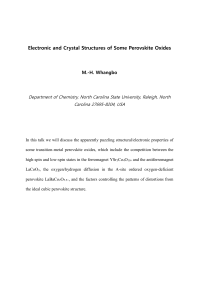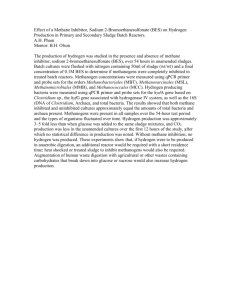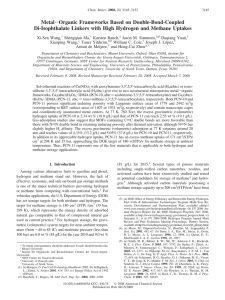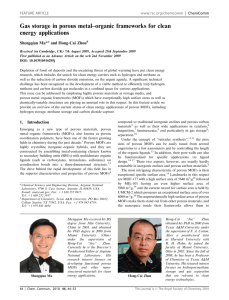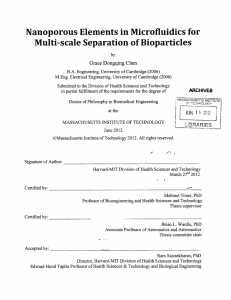Gas Storage in Nanoporous Materials Summary Report
advertisement
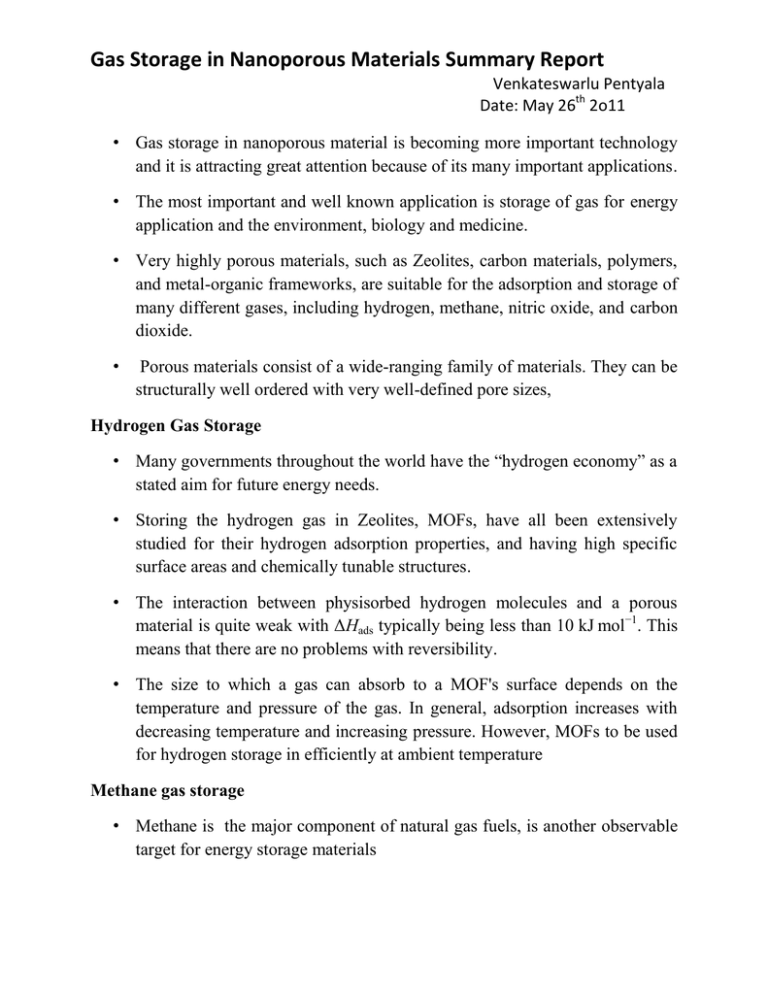
Gas Storage in Nanoporous Materials Summary Report Venkateswarlu Pentyala Date: May 26th 2o11 • Gas storage in nanoporous material is becoming more important technology and it is attracting great attention because of its many important applications. • The most important and well known application is storage of gas for energy application and the environment, biology and medicine. • Very highly porous materials, such as Zeolites, carbon materials, polymers, and metal-organic frameworks, are suitable for the adsorption and storage of many different gases, including hydrogen, methane, nitric oxide, and carbon dioxide. • Porous materials consist of a wide-ranging family of materials. They can be structurally well ordered with very well-defined pore sizes, Hydrogen Gas Storage • Many governments throughout the world have the “hydrogen economy” as a stated aim for future energy needs. • Storing the hydrogen gas in Zeolites, MOFs, have all been extensively studied for their hydrogen adsorption properties, and having high specific surface areas and chemically tunable structures. • The interaction between physisorbed hydrogen molecules and a porous material is quite weak with ΔHads typically being less than 10 kJ mol−1. This means that there are no problems with reversibility. • The size to which a gas can absorb to a MOF's surface depends on the temperature and pressure of the gas. In general, adsorption increases with decreasing temperature and increasing pressure. However, MOFs to be used for hydrogen storage in efficiently at ambient temperature Methane gas storage • Methane is the major component of natural gas fuels, is another observable target for energy storage materials Gas Storage in Nanoporous Materials Summary Report Venkateswarlu Pentyala Date: May 26th 2o11 • Methane gas storage materials are similar to the hydrogen storage materials, in particular the need for higher surface area. • The main difference between the hydrogen and methane gas storage is that the interaction energy between methane and the surface of the materials is already enough to give reasonable adsorption at room temperature. Gas Storage for Medical Applications • The energy applications of gas storage materials have recently taken the spotlight in medicinal area and the gas storage materials for medical applications are possibly much closer to commercialization. • Nitric oxide (NO) is extremely important in mammalian biology. It is implicated in many processes in the body including vasodilatation, the prevention of platelet aggregation and thrombus formation, Gas Storage for Environmental Applications • Environmental remediation that means the removal of the gas from the environment for a very long time to prevent the environmental effects of the gas. • Greenhouse gases like carbon dioxide and other toxic gases such as sulfur dioxide and ammonia also have an important impact on the environment • Porous materials are also well known in these applications an alternative approach is based on separation of gases like carbon dioxide from other exhaust or flue gases, • Gas storage in nanoporous materials is a booming area of research References: 1. Morris, R and Wheatly, P. (5May2008), Gas storage in nanoporous material Angewandte chemie international edition, 47:4966-4981.DOI:10.1002-annie.200703934 2. Introduction to zeolite science and practice, 3rd edition (Eds.; J.cejka, van Bekkum A. Corma, Elsevier, Amsterdam, 2007

